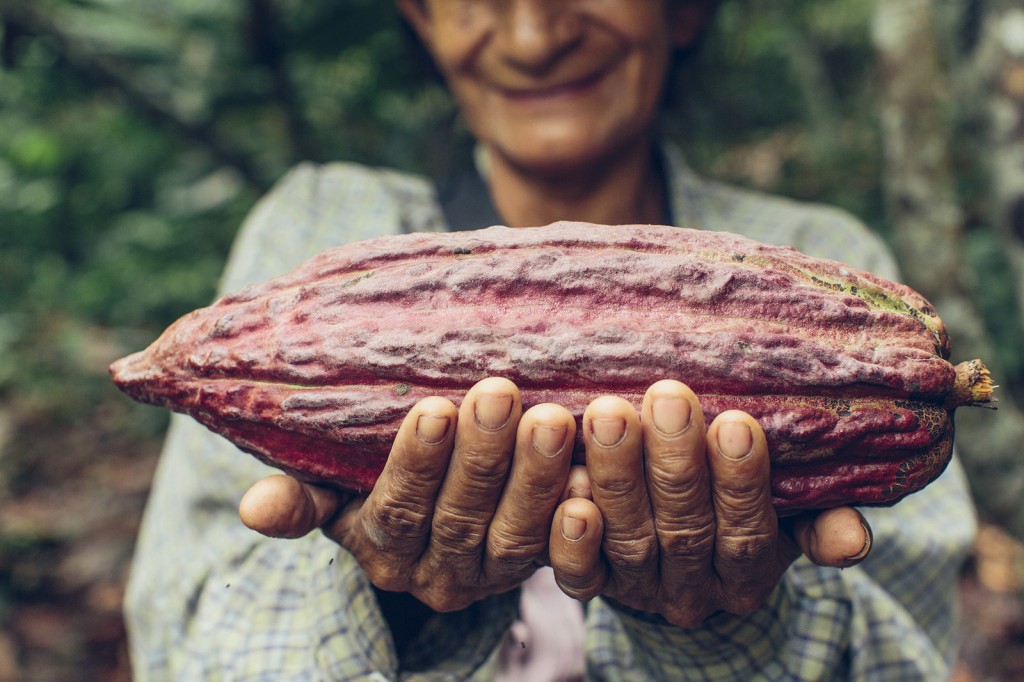This post was originally published on the web page of Environmental Defense Fund and was written by Lauren Newton and adapted from Ann Espuelas’s Ecosystem Marketplace article, Connecting to Sacha Inchi and Beyond: A Database for Products of the Amazon. You can find the originals here and here.
Across the Amazon, indigenous peoples have long harvested well-known commodities like cacao, coffee, Brazil nuts, and hearts of palm. Indigenous communities rely on such “non-timber” forest products—which also include traditional crops and less well-known natural products such as sacha inchi and camu camu—for the communities’ own consumption and for sale.
Responsible trade in these products can make a significant contribution to indigenous communities working to conserve their forests and generate alternative sources of income. Because indigenous management of Amazon forests is critical to controlling and reducing carbon emissions in the atmosphere, responsible trade also aligns with the growing body of corporate commitments to deforestation-free sourcing.
Indigenous products and community enterprises, however, face practical, commercial and organizational challenges in getting to market, particularly at scale. Overcoming these obstacles requires a combination of financial expertise, technical assistance and strategic commercial relationships.
Even for partners interested in working closely with local and indigenous producers for sustainable sourcing of specialty products, though, they can be tough to find. Companies have difficulty trying to identify and evaluate partners for investment and sources of supply because community enterprises are often small-scale, dispersed and relatively inexperienced in using internet and other tools to enhance their visibility.
The Putting Amazon Indigenous Producers on the Map project intends to respond to the needs of buyers seeking supply, of investors and donors looking to provide finance, and of communities aiming to enhance the visibility and demand for their products.
To help improve access to markets and finance for Amazon indigenous peoples, Canopy Bridge, the Environmental Defense Fund (EDF) and a group of Amazon-based and international organizations have developed a catalogue and unique interactive map of indigenous community enterprises for sustainable natural products from forests and farms.
This comprehensive inventory of indigenous producer organizations is publicly available and is the first geospatial database of indigenous products and producer organizations in the Amazon who are engaging (or attempting to engage) with broader national and international markets.
With the support of the United States Agency for International Development (USAID) as part of a five-year program , the database is being developed collaboratively with The Coordinator of Indigenous Organizations of the Amazon River Basin (COICA), EcoDecisión and Forest Trends, in order to make it easier for buyers, funders and other allies to find indigenous partners to work with.
This tool is the first geospatial database of indigenous products and producer organizations in the Amazon.
The groups are working directly with companies and Amazon indigenous producers, gathering input from indigenous organizations belonging to COICA and development partners across the region.
Putting Amazon Indigenous Producers on the Map conveniently synthesizes a breadth of information crucial for potential investors, donors, and private sector actors. This includes: the characteristics and contact information for producer organizations; a listing of products (linked to EcoDecisión’s online platform, Canopy Bridge); a summary characterization of producers’ capacity and experience; and a description of how enterprises contribute to conservation objectives.
The first phase of Putting Amazon Indigenous Producers on the Map includes data collection running through August 2015, with project completion in late Fall. EDF and partners encourage both the private and public sectors to utilize the interactive map and database to connect with indigenous producers and make an impact in reducing deforestation in the Amazon.
Lauren Newton is Program Associate, International Climate Program at Environmental Defense Fund.



